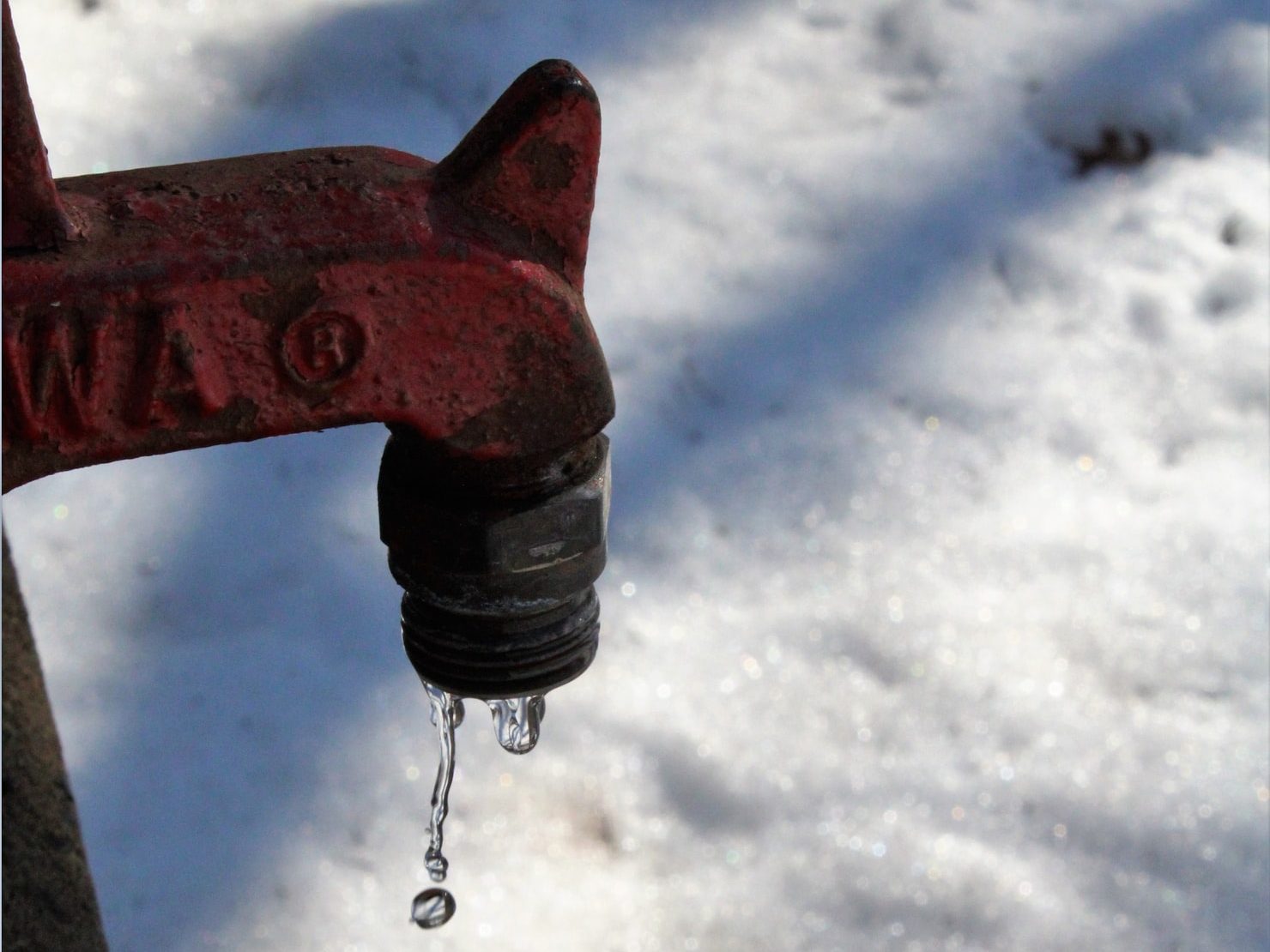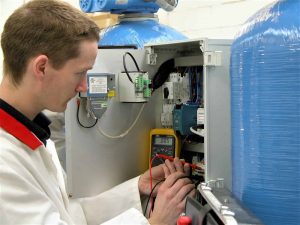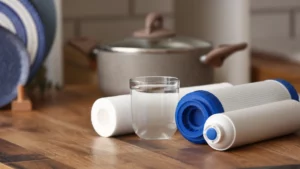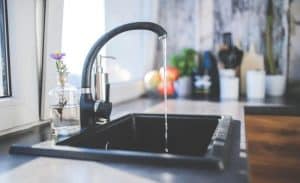Regardless of how well monitored and maintained a system is, and regardless of how thoroughly and regularly it is disinfected, a water purification system can start on a bad note by being poorly designed or installed, to begin with.
1. Poor Design of a Purified Water System
This problem is, unfortunately, more common than it should be, often as a result of businesses buying an ‘off-the-shelf’ solution that hasn’t been designed or tailored to meet the needs of their factory. Performance and water filtration system maintenance issues are the inevitable results.
While we have a range of standard products, these are used within the development of custom-engineered systems for our clients. When choosing a company to design your system, it is important to ensure they have the expertise and flexibility of being able to design and build a system to your exact requirements and offer advice to ensure that a robust and effective solution is the result.
2. Poor Initial Installation of Purified Water Systems
Equally, a well-designed bespoke system can fall down as a result of being poorly or incorrectly installed. This can occur even when professional tradespeople are used. For instance, plumbers and pipefitters will often not understand the intricacies of many water purification systems. There really is no substitute for the professional expertise and knowledge that comes with having a system installed by qualified water purification engineers.
This is something we guarantee at Wychwood each and every time. The people who install your systems are the professionals who have been involved in the process from the outset and know the system in detail.
Therefore, the design, standard of materials used and quality of installation is imperative for the ongoing successful performance and operation of a purified water system.
3. No backup if the Water Purification System Goes Down
Businesses come to rely on their water purification systems, which is all well and good when things are working smoothly. However, it is all too easy to take the system for granted and not have a backup prepared for when the system goes down. While all-out failure is comparatively rare in a well-maintained system, it can and does happen. A failed water purification system can bring a factory to a standstill for days or weeks at a time, at an incalculable cost to productivity and delivery schedules.
To avoid such a disaster it is imperative that you have a rapid response service partner onside to get you up and running again if the worst case happens. This should ideally be the original supplier of your system, who should provide high quality, responsive after-sale support service, with well-trained engineers strategically located to provide expertise and spare parts in the event of a system breakdown.
Unfortunately, a lot of the cheaper systems out there don’t come with such support, which is why it is really important to shop around and choose a partner who offers excellent technical support as part of the overall package.
Make an Informed Decision by Asking for Expert Advice
It can be challenging searching for a water purification system that will offer the most appropriate solution for your business. However, when you have experienced professionals working with you who know and understand the industry and the options open to you, it is far easier to make an informed decision on an appropriate water purification solution.
Bonus: How to Prevent and Remove Bacteria In Water Purification Systems
The prevention of bacteria growth in purified water systems, in most cases, is a factor of good system design in the first place. Installation materials used are normally ABS, PVC, Polypropylene, PVDF or 316L stainless steel.
Installation standards are very important. By this, we mean that all pipework joints should be crevice-free. Purified water should always be kept moving through a purified water distribution ring main. Flow rates are important as a working velocity of 1.5 to 2.0 meters per second should be achieved through the pipework.
Dead spaces are a classic cause of bacteria growth. No dead space, causing static water, should be greater than four internal diameters of the pipework involved. A commonly used and effective method of bacteria prevention is by multiple passing the purified water through an Ultra Violet Steriliser. UV systems are very effective providing they have been installed, sized and operated correctly. In most cases, the effective life span of a UV arc lamp used for bacteria kill is 9000 hours.
The Temperature Of The Purified Water System
Heat is a common cause of bacteria growth. It is often said that 28 Centigrade is the ideal water temperature for bacteria to grow. Whilst this is true, bacteria species such as pseudomonas will start to grow as low as 20 degrees Centigrade. It is good and effective therefore to control the temperature of purified water to < 20 Centigrade, Ideally 18 Centigrade.
A practical method of controlling the temperature of a purified water ring main is to pass the water through a stainless steel heat exchanger. The heat in turn is removed and blown off by an air-cooled chiller unit.
Causes of heat include ambient heat rising within the building the system is installed in. The heat generated by pumps, periods of no water consumption and pipework installed adjacent to steam, hot water pipes or even boilers.
The Effective Removal Of Bacteria With Membranes
Membranes, Reverse Osmosis and Ultrafiltration can be used for bacteria removal. Absolute rated sub-micron Fouled media.
By media, we mean granular activated carbon, filtration sands, catalysts and Ion exchange resins. These media are mostly used in the pre-treatment stages of purified water systems.
Over the use cycle of the media, it is possible for the media to become fouled with organic matter. This in turn can be the cause of bacteria growth. This is often a factor of the user not having the media replaced frequently enough.
Disinfection Methods For Purified Water Systems
To maintain the bacteria performance of a water purification system, it is usually chemically disinfected on a regular basis. The disinfectants used mostly fall into the category of oxidisers. Those commonly used are Sodium hypochlorite, Hydrogen peroxide, chlorine dioxide and a blend of peracetic acid and hydrogen peroxide. The method and chemical used will depend on the design of the purified water system involved, and the bacteria problem to be resolved.
Before entering into disinfections, most clients require help and guidance from water purification specialists. Heat disinfection, (pasteurisation) is a very effective disinfection method. However, the purified water system has to have been designed and installed to facilitate this method in the first place.
Effective Sampling For Bacteria
In most cases, the human eye cannot see bacteria. The presence and quantity of bacteria is established by an analysis conducted by a specialist laboratory. Having gone to this trouble and expense, it is very important that the user can believe and act upon the results received from the analysis. This is a factor of effective sampling through a sterile sampling point.
In Summary:
- The sampling point should be of a stainless steel needle valve type.
- The sample point should be flooded with alcohol, (IPA) or even flamed first
- The sample point should be opened and water passed through for 5 minutes to flush.
- The sample should be collected in a sterile container filled right to the top.
- The sample collector should not breathe on the sample.
- The sample should be sealed and refrigerated until the analysis is completed.
Troubleshooting Bacteria Problems In A Water Purification System
In most cases, this is a job for a specialist. A full survey of the purified water system should be completed. From this survey, an action plan and modifications will follow.
For advice and assistance in the prevention and removal of bacteria in purified water systems, or any other queries relating to the design, installation and maintenance of water purification systems, please contact our team at Wychwood Water Systems Ltd.
Our Team of Water Purification Professionals Are a Call Away
We’ve said it before and we’ll say it again… there is no substitute for good advice from a specialist company when considering the design and installation of a water purification system. Our company, Wychwood Water Systems Ltd was established in 1996 to design, manufacture, install and commission water filtration and purification systems for industrial clients who require pure water for a variety of reasons.
We’re currently offering all new customers a FREE site survey so you can see first-hand what water purification system will be right for your factory. To arrange a convenient time, we welcome you to call us on 01993 892211 or contact us with your enquiry to learn more.





